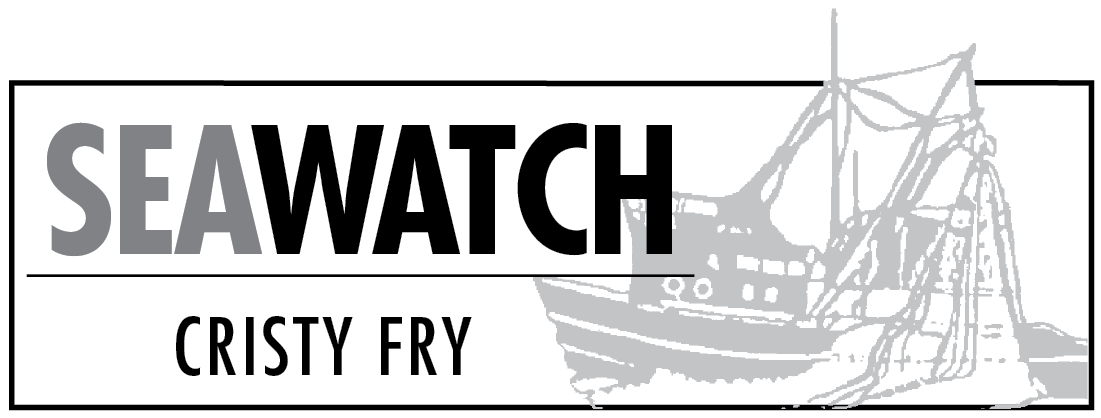Ten days into the 2015 halibut season, prices are beginning to fall slightly, but production is nearly nonexistent, at least in the central Gulf of Alaska, Area 3A.
Stormy weather and big tides have conspired to make a slow start to the season in Area 3A, with the weather continuing to keep boats in port this week.
Boats in the area delivered only 146,000 pounds from 26 deliveries during the first 10 days, although deliveries in Southeast Alaska, Area 2C, topped out at 420,000 pounds from 62 deliveries.
There were either no deliveries or they were below the threshold to allow reporting due to confidentiality rules in the rest of the state.
Prices started out similar to last year at $6.50, $6.75 and $7 per pound for 10-20s, 20-40s and 40-ups, but have fallen about 25 cents per pound since then.
Jeff Berger, buyer for Copper River Seafoods, said the market is short of fish, in spite of the high dock prices.
“The other side of that is, when the prices get up in the $6 range, it puts the fillet on the grocery store shelf in America at somewhere close to $20 (per pound) if not over,” he said, “with recovery and cost of distribution and insurance labor and all the other increased costs these days.
“When you start getting a piece of meat that’s over $20, the demand starts to dwindle rapidly.”
He said the $20 per pound mark seems to be the magic mark these days in terms of interest.
He added that with halibut prices having been so high in recent years, a lot of restaurants take it off of their menus and substitute less expensive fish such as cod, sea bass and other white fish, and it is sometimes difficult to get it back on the menu.
“It has to drastically reduce in price and get people back interested in it. We’re kind of in that situation, I think,” Berger said.
He noted that processors do not set the price; like most things it is mostly based on supply and demand.
Berger said black cod is also scarce. Only 11,000 pounds have been landed from five deliveries in the central Gulf of Alaska, and 427,000 pounds in Southeast from 26 deliveries.
Black cod prices vary much more than halibut, ranging between around $3.75 per pound for 1- to 2-pound fish to around $7.25 per pound for fish over seven pounds so far this season.
The black cod quota held steady at 23.6 million pounds after a couple of years of declines. The 2012 quota was 29.3 million pounds.
The halibut quota is up slightly in most areas this season, with the state-wide total set at 17.1 million pounds, after bottoming out in 2014 with a state-wide quota of 15.9 million pounds.
• • • • •
The Sitka Sound sac roe herring fishery kicked off last week with a twist: nearly half the boats stayed home.
Due to slumping roe prices and a slashed quota, fishermen and processors agreed to a cooperative arrangement where the quota is divided by the number of boats, and each boat’s share is sold to the processor they are contracted with.
The 8,700-ton quota is just over half as much as last season’s quota of 16,800 tons, and the lowest since 2003.
Twenty-seven of the 48-boat fleet went to Sitka to catch the fish.
Homer fisherman Beaver Nelson said as far as he knew nothing was in writing for the co-op, saying, “it’s all just a gigantic gentlemen’s agreement.”
He said the only way to make it really pencil out was also for a boat to be able to contract to haul its own fish to the processor, rather than delivering to a tender, in addition to the price of the fish themselves.
Nelson said the rumor is that the herring price was expected to be between around $150 per ton, and about the same for a tendering fee. Fishermen catching the shares for three or four other boats and packing it all to the canneries can make some good money, he said, but going down just for one share does not make sense.
“You’ve got to drive all the way down there, all the way back, the hazards of coming and going, fuel costs and all that stuff.”
As of Monday, over half the quota had been caught, and roe percentages were between 11 and 13.5 percent.
No spawn had been sighted, but the quota should be cleaned up by press time.
• • • • •
Gov. Bill Walker has appointed former Kenai Watershed Forum executive director Robert Ruffner to the Board of Fisheries to finish out the term of former chair Karl Johnstone and then to a term of his own which would expire in 2019.
Ruffner is widely respected in the habitat protection community. Cook Inletkeeper executive director Bob Shavelson said he has worked closely with KWF for 18 years, and had nothing but praise for the choice.
“I think he’s an excellent appointee. He’s balanced. He’s going to put fish and fish habitat first,” Shavelson said. “I’ve watched him navigate the treacherous waters of Kenai River fish management, and he’s done it in a way that’s been even-handed, scientifically based. He’s a level-headed guy.”
Although Ruffner does not have much experience with commercial fishing, Shavelson said he understands the allocation issues surrounding Cook Inlet.
Many commercial fishermen, especially setnetters, supported Ruffner’s appointment after Roland Maw withdrew his name from consideration. Supporters hope Ruffner’s habitat protection experience can help bring back Kenai River king salmon populations.
There remains one more board seat to fill, that of Orville Huntington who will serve until June. Walker is expected to announce the candidate to fill that seat by April 1.
Both appointees must be confirmed by the Legislature.
Cristy Fry can be reached at realist468@gmail.com.


